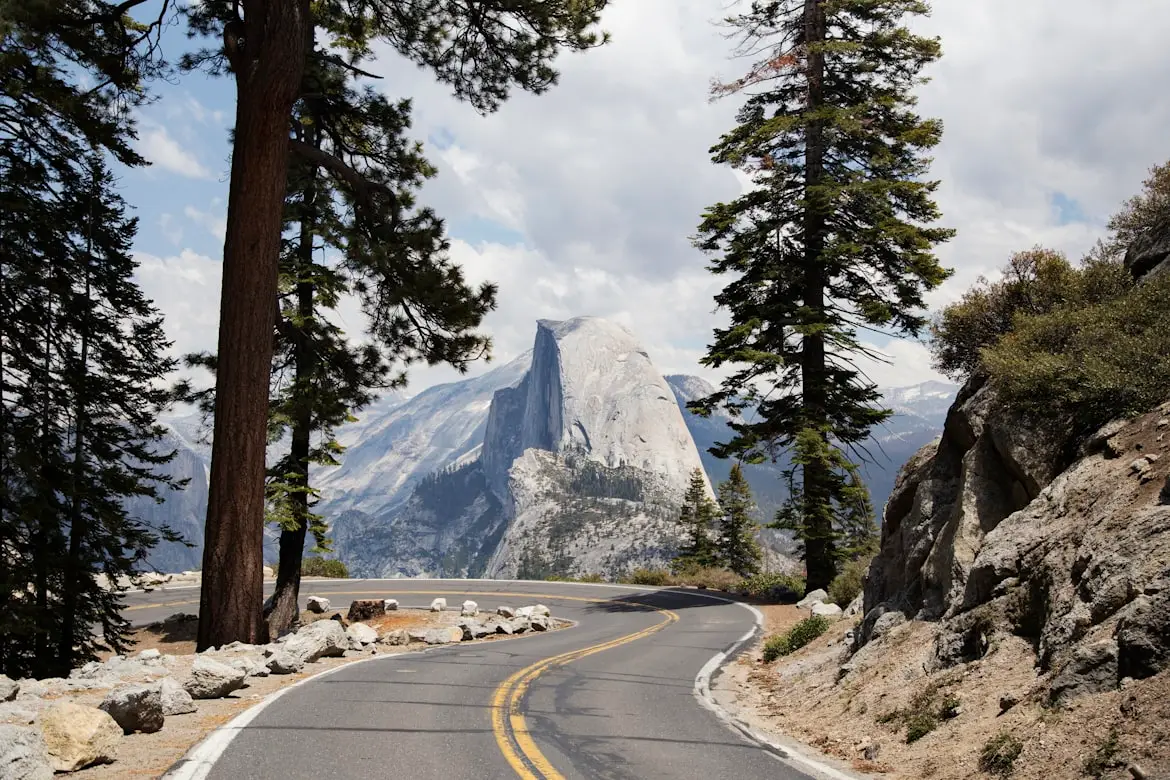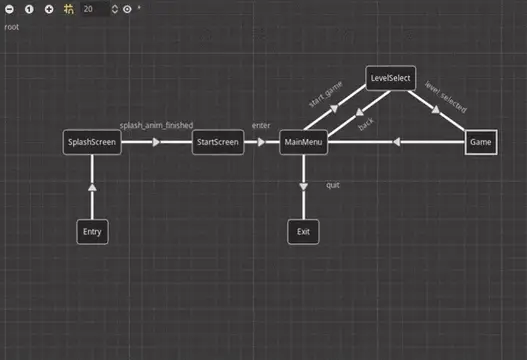Install Asset
Install via Godot
To maintain one source of truth, Godot Asset Library is just a mirror of the old asset library so you can download directly on Godot via the integrated asset library browser

Quick Information

Demo for gd-YAFSM, to showcase how you can integrate gd-YAFSM into your project.
Demo for gd-YAFSM
The purpose of this project is to showcase how you can integrate gd-YAFSM into your project.
Content
Manage App State
One of the best way to show the potential of StateMachine/gd-YAFSM is through managing app state as you can have full control over transitions of scenes.

Change Scene
func _on_AppState_transited(from, to):
......
# Handle previous scene
var prev_scene
if from_dir.is_nested():
if from_dir.is_exit():
prev_scene = get_node_or_null(from_dir.get_base())
else:
prev_scene = get_node_or_null(from)
if prev_scene:
prev_scene.queue_free()
# Handle next scene
var next_scene
match to_dir.next():
"SplashScreen":
next_scene = splash_screen_scn.instance()
"StartScreen":
next_scene = start_screen_scn.instance()
"MainMenu":
next_scene = main_menu_scn.instance()
"LevelSelect":
next_scene = level_select_scn.instance()
"Game":
match to_dir.next(): # Match nested state
"Entry": # Game/Entry
next_scene = game_scn.instance()
"Exit":
get_tree().quit()
if next_scene:
next_scene.name = to_dir.get_base()
next_scene.set("app_state", app_state)
add_child(next_scene)
Main.gd free previous scene & spawn next scene in "transited(from, to)" signal
Cache Scene
Cache a unfinished game level, then restore it on next time
func _on_AppState_transited(from, to):
......
match to_dir.next():
"Game":
match to_dir.next():
"Exit": # Game/Exit
if not ("End" in from): # Not from Game/End(not finished)
remove_child(current_level_instance)
app_state.set_param("last_level", current_level_instance)
current_level_instance = null
......
func setup_level():
if app_state:
var last_level = app_state.get_param("last_level")
...
current_level_instance = last_level
...
if current_level_instance:
current_level_instance.set("app_state", app_state)
add_child(current_level_instance)
Game.gd cache unfinished level with StateMachinePlayer.set_param, then retrieving from StateMachinePlayer.get_param to restore it
NOTE: Always remember to manually free
Node, when erase fromStateMachinePlayerto avoid memory leak
Pause Game
Pausing game is just as easy as few line of codes:
func _on_AppState_transited(from, to):
match to_dir.next():
"Game":
match to_dir.next():
"Pause": # Game/Pause
if not pause_menu_instance:
pause_menu_instance = pause_menu_scn.instance()
pause_menu_instance.set("app_state", app_state)
......
add_child(pause_menu_instance)
get_tree().paused = true
"Play": # Game/Play
......
get_tree().paused = false
if pause_menu_instance:
remove_child(pause_menu_instance) # Don't free yet, save for later
Game.gd handle pause & resume
Game State
Most of the game has its own rules, like in what condition player win/lose, and this can be managed by StateMachine as well:
...
func _on_Area_body_entered(body):
# Victory
if body is Character3D:
if app_state:
app_state.set_param("Game/End/win", true)
app_state.set_trigger("game_end")
...
KinematicLevel3D.gd make use of nested parameter "Game/End/win" to update game state
NOTE: Nested parameter("Game/End/win") is used in this case, so that it will be reset(erased) automatically on "Game/End/Exit" and you don't have to initiliaze the parameter everytime game start
Manage Character State
func _on_StateMachinePlayer_updated(state, delta):
# NOTE: It is more efficient to run directly in _physics_process, this demo is to showcase how to handle logic in updated signal
velocity += Vector3.DOWN * 9.8 * delta
match state:
"Idle":
pass
"Walk":
velocity += walk * speed * delta
walk = Vector3.ZERO
"Jump":
_jump_count = 0
jump()
smp.set_param("jump_count", _jump_count)
"Jump(n)":
jump()
smp.set_param("jump_count", _jump_count)
"Fall":
smp.set_param("jump_elapsed", OS.get_system_time_msecs() - _last_jump)
velocity = move_and_slide(velocity, Vector3.UP)
velocity.x *= pow(1.0 - damping, delta)
velocity.z *= pow(1.0 - damping, delta)
Character3D.gd update motion of KinematicBody
Note:
StateMachineas aResourceonly store static data, therefore it is highly reusable. For instance, both Character2D/3D are using the sameStateMachineresource to control motion despite they inherit from different class
Demo for gd-YAFSM, to showcase how you can integrate gd-YAFSM into your project.
Reviews
Quick Information

Demo for gd-YAFSM, to showcase how you can integrate gd-YAFSM into your project.

